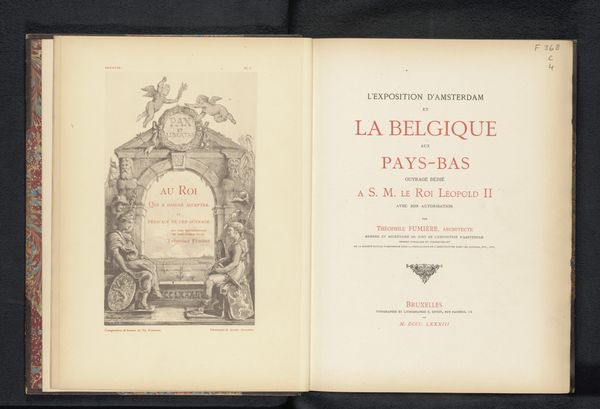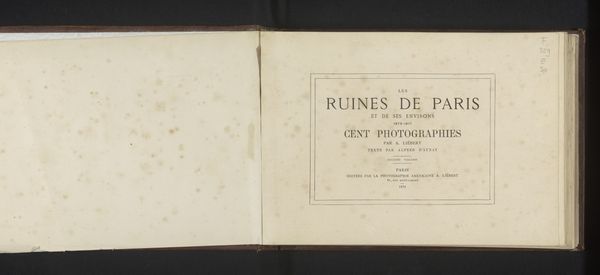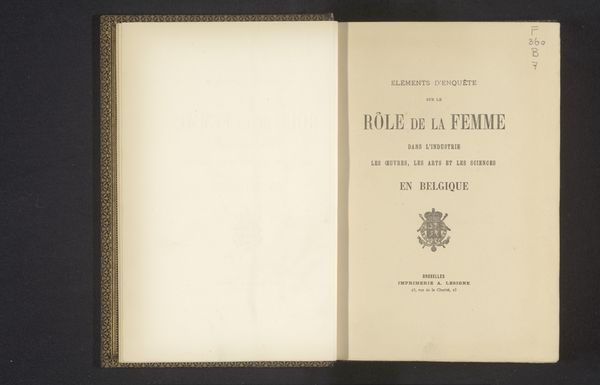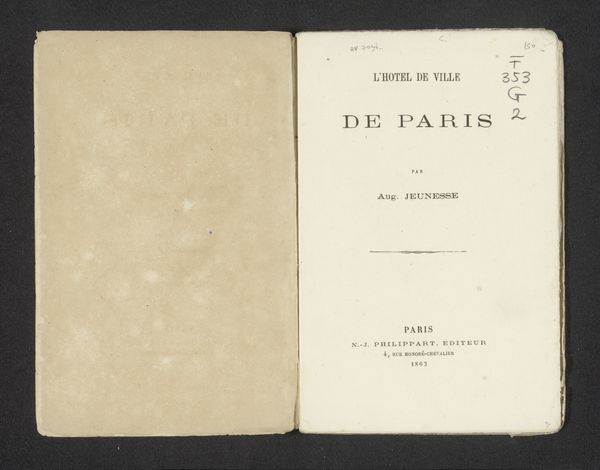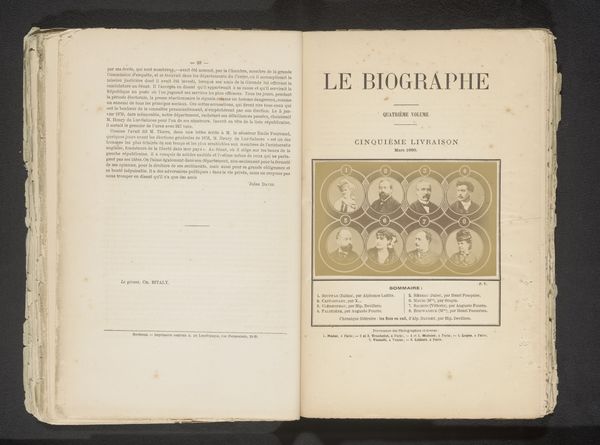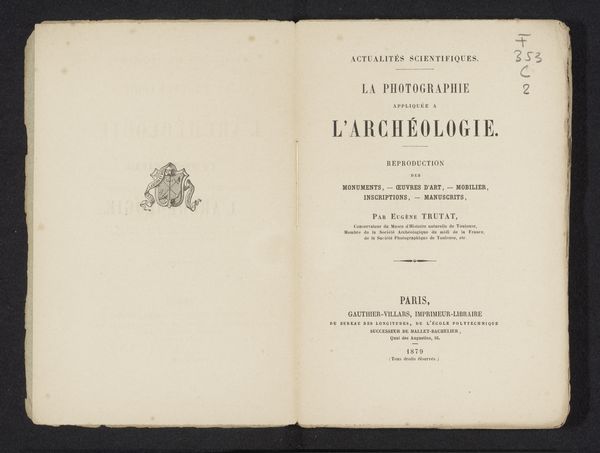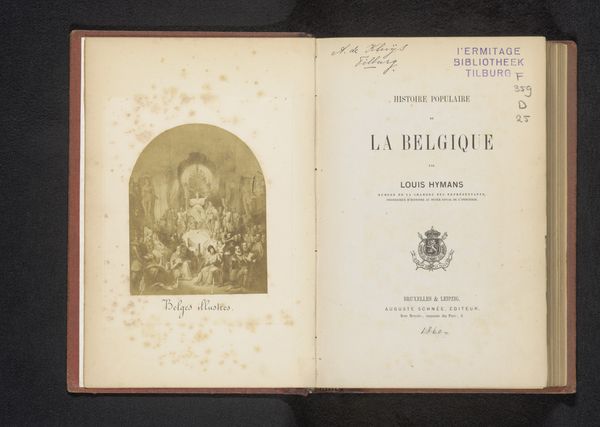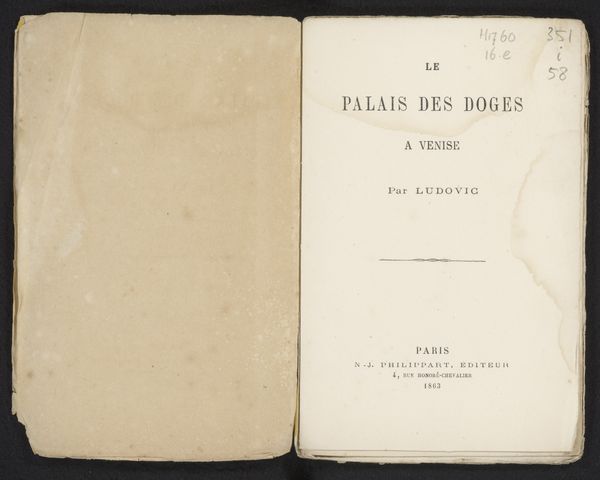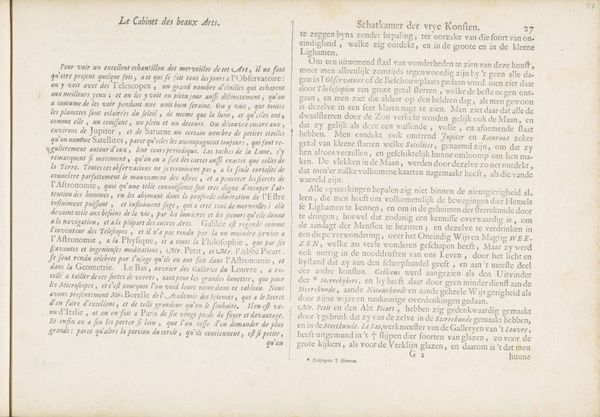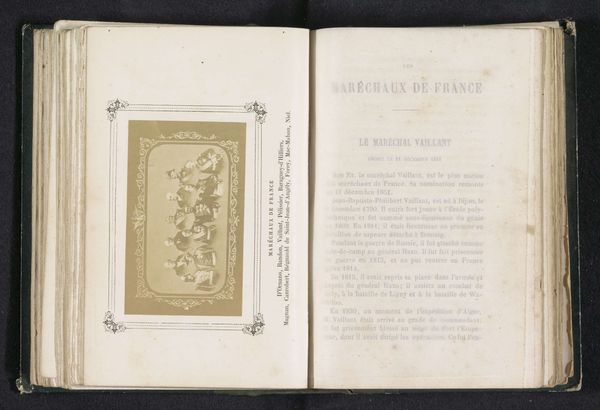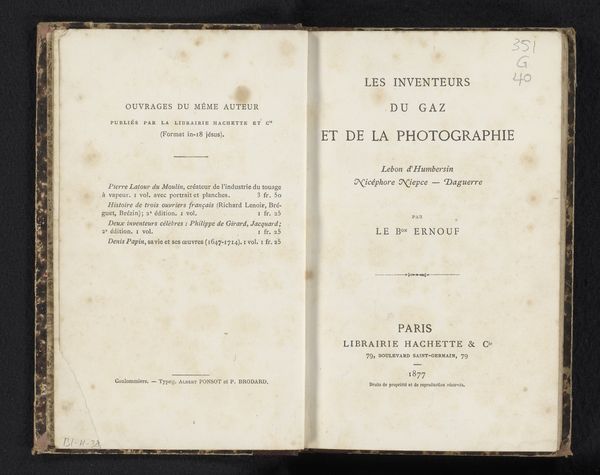
print, textile, paper, typography
#
portrait
#
aged paper
#
homemade paper
# print
#
sketch book
#
hand drawn type
#
landscape
#
textile
#
paper
#
personal sketchbook
#
typography
#
hand-drawn typeface
#
fading type
#
stylized text
#
thick font
#
sketchbook art
#
modernism
#
calligraphy
Dimensions: height 398 mm, width 333 mm, thickness 25 mm
Copyright: Rijks Museum: Open Domain
Editor: Here we have "Hommage de la Gazette de France à la mémoire du roi," from 1883. It appears to be a printed dedication, possibly from a book. The paper looks aged. How would you interpret this work, keeping in mind its context? Curator: Looking at the materials – the paper itself, the print, the implications of typography as a crafted medium – reveals a lot. The physical aging of the paper tells a story of consumption and preservation, of the Gazette's endurance as a material object. It highlights the shift from handcrafted production of text to the industrialized printing press, raising questions about access to information and power structures within 19th-century France. Editor: That’s fascinating. It’s easy to overlook the materiality when you're just reading the text, but you're right; the method of production impacts everything. Does the typography tell us something about craft practices? Curator: Exactly! The stylistic choices in the font, the layout of the page... Were these created with traditional methods or using newer technologies? This gets at questions about the changing value of skilled labor and the aesthetics that accompanied industrialization. What kind of person was employed? Editor: I never considered typography as labor before! Curator: The transition from calligraphy to standardized fonts signifies a change in not only design but also production. Each decision informs us about its intended audience and place within consumer culture. Editor: That definitely changes how I see this piece. It's not just a message, but evidence of shifting means of production and consumption in society. Thanks! Curator: Indeed. We need to think about what it took to create this "homage" – the material realities of its production. Then we’re able to really understand this tribute.
Comments
No comments
Be the first to comment and join the conversation on the ultimate creative platform.

